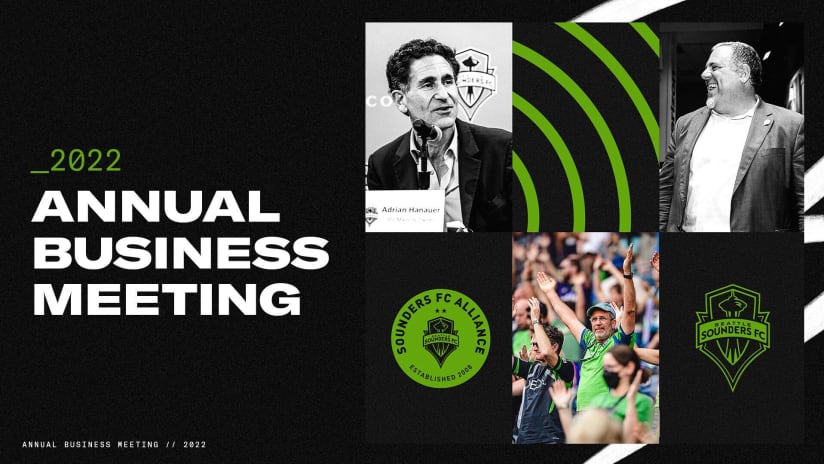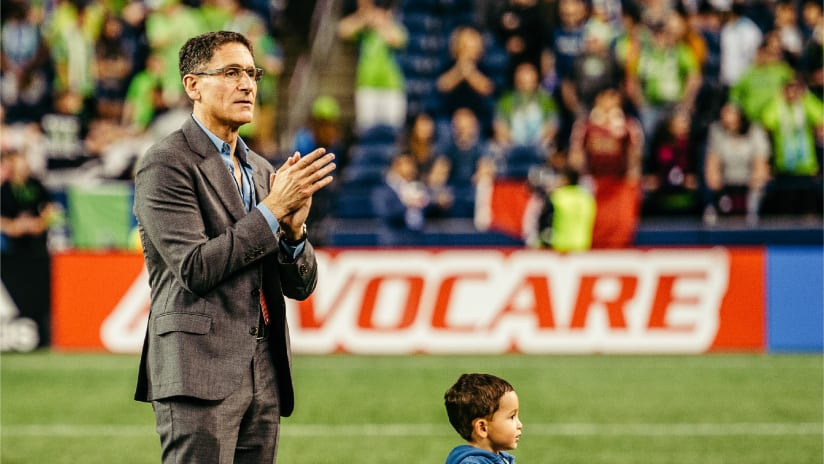Owner and general manager Adrian Hanauer gets an up-close look at the world of soccer in China.
Owner and general manager Adrian Hanauer gets an up-close look at the world of soccer in China.
It’s a 13-hour flight from L.A. to Shanghai. I had time to think about soccer but there was plenty of time to sleep as well.
Meeting us in Shanghai was Peter Yeung, an agent with Ramp Management. The objective was to meet some representatives from different clubs, see some training sessions, see a couple of games and talk with some players. Peter guided us to team officials and also served as our translator. I speak pretty good French, some German and Spanish, but communicating in China would’ve been out of my league.
Certainly it was a full schedule. In Shanghai, we first met with some of Nike’s representatives there. They were helpful and gave us a pretty objective look at the world of football in China.
After spending the first night in Shanghai, we flew the next day to Xi’an. The driver said, “Welcome to our little city.” We asked how little: about 8 million people.
As everybody knows, China is developing at a phenomenal rate. On our
flight I read that buildings of 30 stories or higher were being
completed in Shanghai every 23 days. There are lots of these big
buildings and, architecturally speaking, they are very interesting.
In Xi’an, we met the manager and coaching staff of Xi’an Chanba and
then watched a training session. We had no idea what to expect, but
from the training sessions we saw the players are very sound
technically. By comparison European sessions, and even those here in
America, are much more structured, rigorous and focused on details.
Clearly, they have a high level of football understanding and the
technical aspects.
Chinese teams are allowed four internationals and a lot of the foreign players are from Brazil, with some from Paraguay and Eastern Europe. The coaching staffs are almost entirely Chinese.
Compared to the West
The club officials are very interested in gaining expertise from the outside world, particularly from Europe. The MLS is young, but they expressed an interest in sending coaches to the U.S. to observe training methods. At the same time, the outside world is interested in bringing their clubs to play Chinese teams and learn how their leagues stack up.
Our next stop was Greentown, outside the major city of Hangzhou. My first impression of this and other clubs was that their facilities were fairly sophisticated and clearly they had invested a lot of capital. This particular facility is within a 40-acre complex that included a four-story building, sleeping quarters for the team, an academy and school for about 2,000 players ages 6-15, a gymnasium with basketball/futsal courts and a weight room, a swimming pool and about 10 football pitches.
We returned to Shanghai to see our first game and also visit with a friend. Yao Li Jun, a player for Shanghai Shenhua, had come to the Sounders on a trial basis a year ago. It was good to see him and learn how he was doing. Later, I dragged Peter and Brian to a spicy Szechuan restaurant. The food was great, although sometimes you’re not sure what critters you’re eating. It was hairy crab season during our visit, so we also got a chance to sample that.
Football Night in China
Our game on Halloween night featured two of the top four teams in the Super League. Shanghai Shenhua, the biggest club in one China’s biggest cities, was hosting leaders Changchun Yatai. Li Weifeng, Shenhua’s central defender, is one of the most capped players in national team history. Previously, he spent some time at Everton. During a conversation with Li we got his view of the differences between playing in China and the Premier League.
We made our own observations after watching both his game and another between Zhejiang Lucheng and Dalian Shide the following night. First, the quality of play was very, very sound technically, and the creativity and flow was good to watch.
The area we questioned most was the physical aspect of the game. The speed of play may be a little higher in the U.S. and England, but certainly the biggest difference is the physical contact. We noticed that in China there is much more sportsmanlike behavior. Very little pushing or shoving, and players actually help one another up after a foul.
Crowd sizes average about those of MLS games. The stadiums are big, not super-modern and yet they are relatively comfortable. Many Super League games are televised and essentially you can watch a game whenever you turn on a television. Games from Italy, Spain and especially England.
Ownership of Chinese teams varies. Some clubs are owned privately, some by giant corporations and some of those companies are operated by the government. So, in effect, the government is still running these clubs, and the future ownership structure remains to be seen.
Getting to Know You
The business managers of these Chinese clubs were sincerely honored and impressed that an owner and head coach would come to personally meet and spend time with them. Typically, their contact with a foreign club is through a scout or agent. I think we developed relationships which will help us down the line, both with them and the players.
Absolutely, I believe it was a worthwhile trip in terms of learning more about Chinese football and developing contacts. All of this will pay future dividends and we’ll probably follow-up with another trip to China in 2008.
Next week: On the road again with Adrian as he attends the MLS Cup festivities in Washington.




